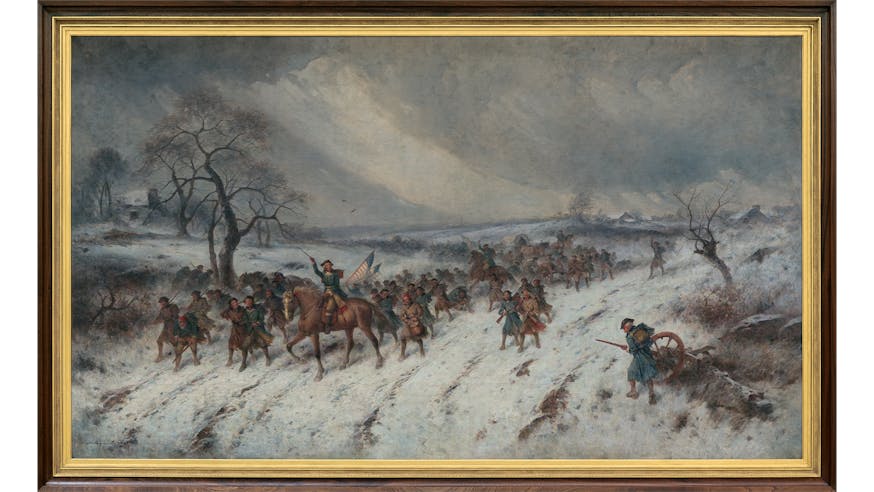News & Updates
Now on View: New Display on the Story of Washington's Prayer at Valley Forge
September 15, 2023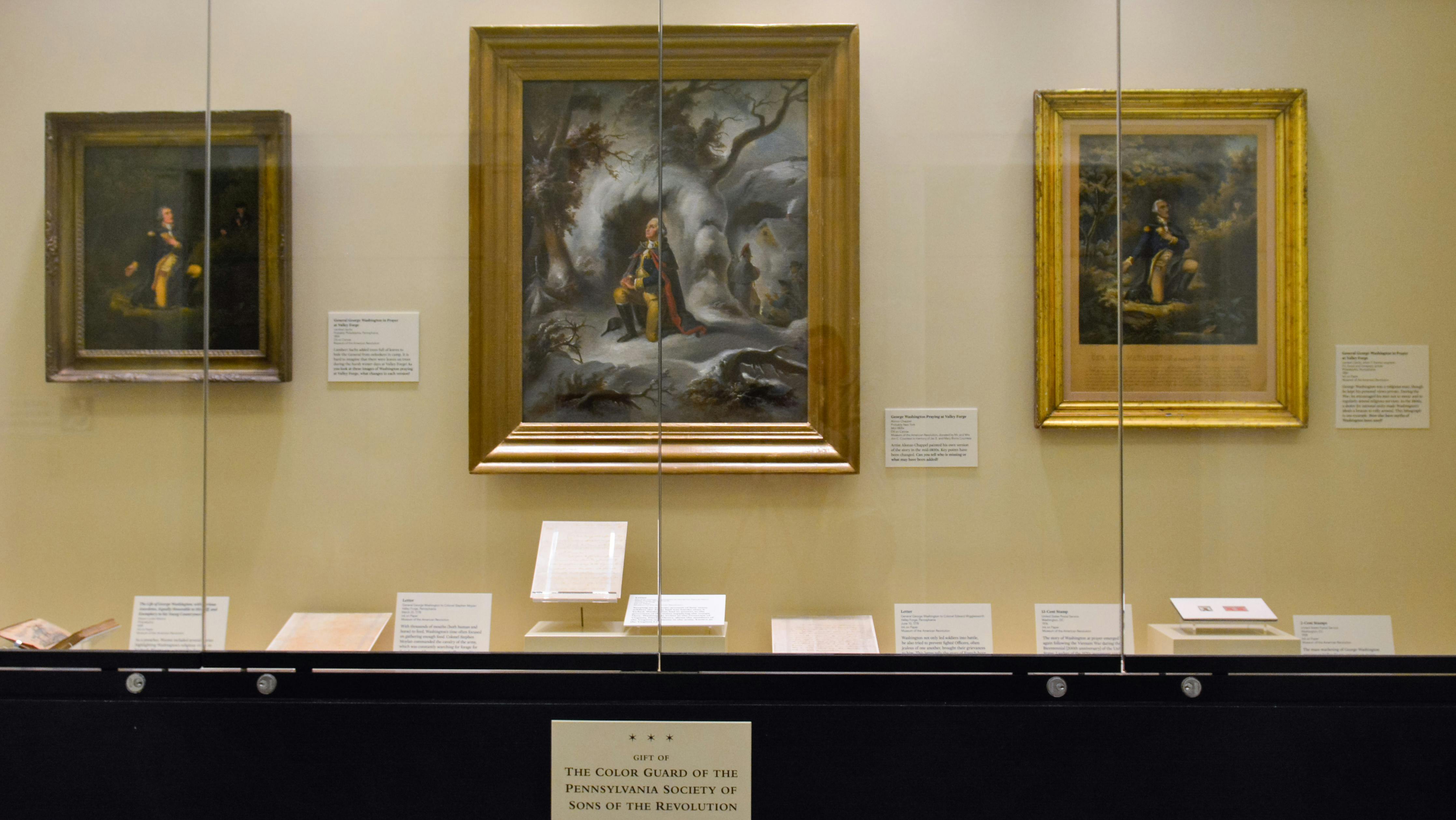
Mason Locke Weems, an evangelical preacher, author, and bookseller, was one of the first to present George Washington as a “heroic” American. His 1808 biography, The Life of George Washington, used stories that were often based on little or no evidence to demonstrate Washignton’s good nature and values. One story focuses on the encampment of the Continental Army at Valley Forge.
During and after the Revolutionary War, religious groups like the Society of Friends, or Quakers, that did not openly support the Revolutionary cause often found themselves disregarded. In Weems’ story, a Quaker named Isaac Potts, the man whose property Washington and his army set up the encampment during the winter at Valley Forge, witnessed Washington praying in the woods. This convinced Potts to declare allegiance to the Revolution despite his Quaker faith. Although Potts spent the winter of 1777-1778 in Pottstown, 20 miles from Valley Forge, the story gained attention. It promoted the need for people of all religions to come together as citizens of a new nation.
The story of Washington praying at Valley Forge gained popularity in the 1800s, partly due to the Great Awakening, which revived religious fervor, and partly due to the growing tension over slavery, which led to the Civil War. Potts slowly disappeared as Washington became the focus. Some claimed the image of Washington at prayer for national unity. Others used the image to promote the United States’ righteousness as it expanded its states and territories.
See artifacts below — and on display at the Museum through May 2024 in the second-floor atrium case thanks to the Color Guard of the Pennsylvania Society of Sons of the Revolution — related to the story of Washington's prayer "on bended knee" at Valley Forge.
The Life of George Washington; with Curious Anecdotes, Equally Honorable to Himself, and Exemplary to his Young Countrymen by Mason Locke Weems, 1808

As a preacher, Weems included several stories highlighting Washington’s religious virtue in his book. Weems was a storyteller first, and a historian second. He created stories like the “cherry tree” tale about Washington chopping down his father’s tree and being punished.
"General George Washington in Prayer at Valley Forge" painted by Lambert Sachs, 1854

Lambert Sachs added trees full of leaves to hide the General from onlookers in camp. It is hard to imagine that there were leaves on trees during the harsh winter days at Valley Forge. As you look at this image and the following engraving of Washington praying at Valley Forge, what changes in each version?
"General George Washington in Prayer at Valley Forge" engraved by P. Kramer, 1854

George Washington was a religious man, though he kept his personal views private. During the Revolutionary War, he encouraged his men not to swear and to regularly attend religious services. In the 1800s, a desire for national unity made Washington’s ideals a beacon to rally around — this lithograph is one example. How else have myths of Washington been used over time?
"George Washington Praying at Valley Forge" painted by Alonzo Chappel, mid-1800s

Artist Alonzo Chappel painted his own version of the story in the mid-1800s. Key points have been changed. Can you tell who is missing or what may have been added?
2-Cent Stamps, 1928

The mass marketing of George Washington praying at Valley Forge appears on many everyday items. Can you think of ways in which stories like this one have been told by and for different people?
13-Cent Stamps, 1976
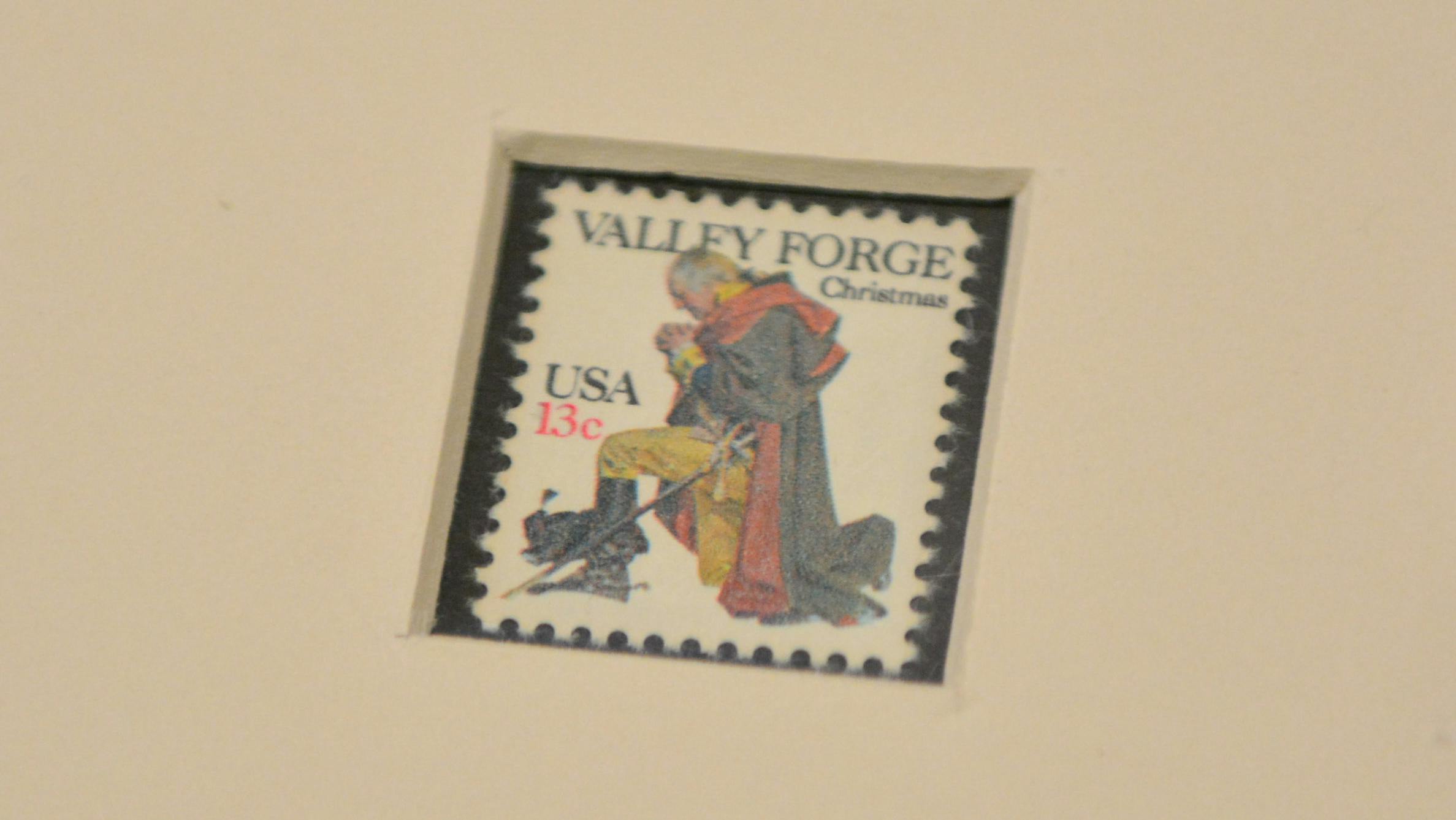
The story of Washington at prayer emerged again following the Vietnam War during the Bicentennial of the United States. Leaders of the 1970s movement aiming to place Christianity and religious motivations at the center of American identity adopted the story and imagery to advance their cause.
Letter from General George Washington to Governor Patrick Henry, Jan. 3, 1778

Keeping an accurate account of how many soldiers the Army had was harder than it looked. Washington had to answer to the governors of the states supplying the troops. In this letter, Washington writes to the Governor of Virginia Patrick Henry about the numbers of the Virginia regiments in the army, known as the Virginia Line.
Letter from General George Washington to Colonel Edward Wigglesworth, June 10, 1778

Washington not only led soldiers into battle, he also tried to prevent fights. Officers, often jealous of one another, brought their grievances to him. This letter tells the story of French-born Lieutenant Colonel Mauduit du Plessis whose artillery officers refused to serve under him after his promotion.
Letter from General George Washington to Colonel Stephen Moylan, March 25, 1778

With thousands of mouths (both human and horse) to feed, Washington’s time often focused on gathering enough food. Colonel Stephen Moylan commanded the cavalry of the army, which was constantly searching for forage for their horses. After wintering in Trenton, New Jersey, Washington, his staff, and Moylan needed to find greener pastures so that both horses and riders were ready to fight the British again.
Learn More
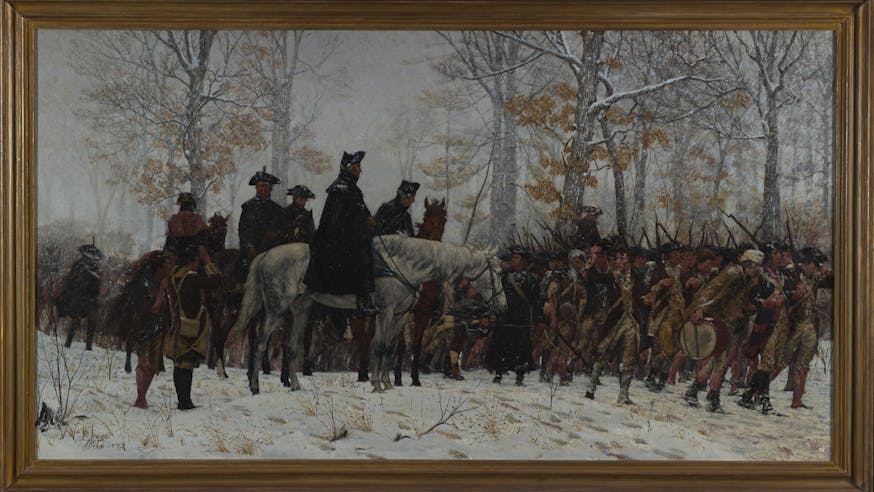
March to Valley Forge
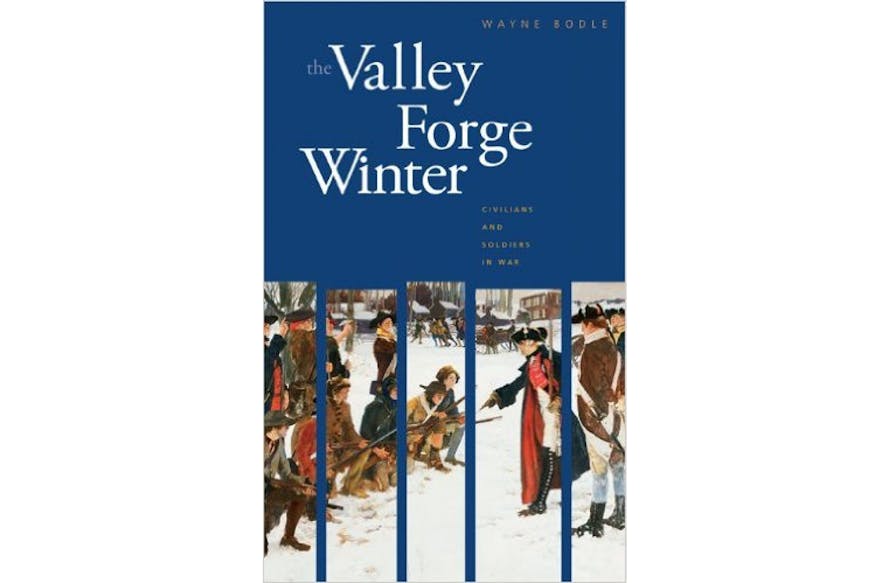
The Valley Forge Winter
